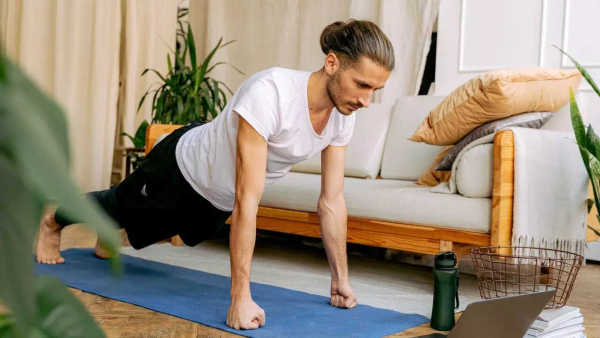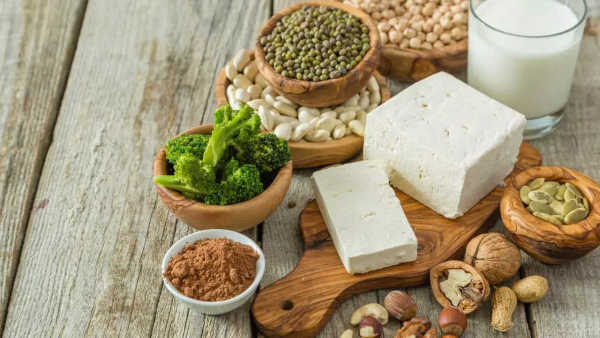
Tucked deep inside your body, there’s a type of fat that doesn’t just sit there — it stirs up trouble. It surrounds your organs, messes with your metabolism, and quietly raises your risk for things like heart disease, diabetes, and more. It’s called visceral fat, and the kicker is, you don’t have to look overweight to have too much of it.
In fact, even slim folks can carry dangerous levels of visceral fat — a condition sometimes referred to as “skinny fat.” Unlike the soft layer just under your skin (subcutaneous fat), this kind hides out around your liver, kidneys, intestines, and heart, fueling inflammation and silently working against your health.
How to tell if you’ve got too much visceral fatIf visceral fat is about 10% of your body’s total fat mass, that’s normal and healthy, according to the
Cleveland Clinic.
According to the
US Centers for Disease Control and Prevention. Generally, if your waist measures more than 35 inches for women or 40 inches for men, it may be time to take notice. But don’t cheat the tape, breathe out naturally and wrap it just above your hip bones, right around the belly button.

Another hint is your muscle-to-fat ratio. If you’ve lost muscle and gained fat, especially as you age, that imbalance can mean more visceral fat inside, even if the scale doesn’t budge much. Tools like DEXA scans or smart body composition scales can offer more insight, but the everyday clues, low energy, weight gain around your midsection, or poor sleep, are often just as telling.
Dr. Chris Chappel, on his social media page, recently shared nine habits that can naturally shrink visceral fat.
Avoid late-night eating
Eating close to bedtime isn’t just about calories, it affects hormones like insulin, cortisol, and glucose, which all play a role in fat storage. Try shifting your biggest meals to earlier in the day and giving your body a few hours of fasting before bed.
Embrace the coldCold exposure, like a quick 1–2 minute cold shower or using an ice pack a few times a week, can activate brown fat, which burns energy to produce heat. It’s not a miracle fix, but it can help reduce waistline over time when done consistently.
Move more

It’s not just about your workouts. Daily movement that isn’t “exercise”, like walking while on the phone, cleaning the house, or taking the stairs, actually burns a surprising amount of fat. It’s called NEAT (non-exercise activity thermogenesis), and it adds up fast.
Apple cider vinegar before mealsTaking a tablespoon of diluted apple cider vinegar about 10 minutes before meals has been shown to reduce post-meal blood sugar spikes. Stable blood sugar means less fat storage, particularly around the belly.
Prioritize sleepSleep isn’t just rest, it’s a reset button for your hormones. Getting less than 6 hours a night over time is linked to significant increases in visceral fat. Aim for 7 to 9 hours, cut screen time before bed, and sleep in a cool, dark room.
Add more soluble fiber

Soluble fiber helps regulate blood sugar, supports gut health, and improves insulin sensitivity, all of which play a part in reducing belly fat. Some good sources: avocados, oats, flaxseeds, and Brussels sprouts.
Rethink your cooking oilsHighly processed oils like canola, soybean, and corn oil can fuel inflammation, which plays a big role in fat gain. Instead, reach for olive oil, avocado oil, or even grass-fed butter in moderation.
Lift weights Resistance training just two or three times a week can lower visceral fat, even if your weight doesn’t drop. Building muscle improves insulin sensitivity, which helps your body manage fat storage more efficiently.
Start your day with protein

Skipping protein in the morning is a missed opportunity. A breakfast with 30–40 grams of protein helps reduce hunger later in the day and keeps blood sugar levels steady. Try eggs, Greek yogurt, a protein shake, or lean meats like turkey sausage.
Disclaimer: This article is for informational purposes only and does not constitute medical advice. Always consult a qualified healthcare professional before making changes to your diet, exercise routine, or lifestyle, especially if you have underlying health conditions. Individual results may vary.
 Tucked deep inside your body, there’s a type of fat that doesn’t just sit there — it stirs up trouble. It surrounds your organs, messes with your metabolism, and quietly raises your risk for things like heart disease, diabetes, and more. It’s called visceral fat, and the kicker is, you don’t have to look overweight to have too much of it.
Tucked deep inside your body, there’s a type of fat that doesn’t just sit there — it stirs up trouble. It surrounds your organs, messes with your metabolism, and quietly raises your risk for things like heart disease, diabetes, and more. It’s called visceral fat, and the kicker is, you don’t have to look overweight to have too much of it.



